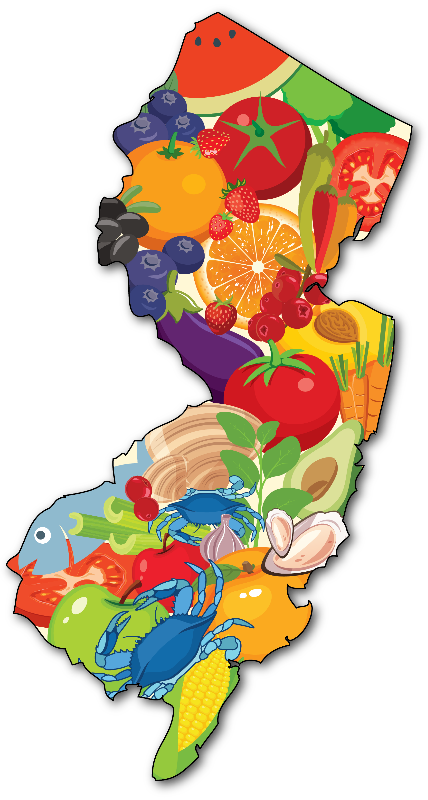

The New Jersey Food System Dashboard is a one-stop source for publicly available information on the different aspects of the state’s food system. The data and figures provide a snapshot of the current state of our food system.


The New Jersey Food System Dashboard is a one-stop source for publicly available information on the different aspects of the state’s food system. The data and figures provide a snapshot of the current state of our food system.
Loading geography data...
The information is organized into four broad categories: Food and Nutrition Access; Agriculture & Land Use; Food System Economy; and Food and Climate.
We acknowledge that many more indicators can be measured to provide a more comprehensive picture of our food system, however, the focus of the data dashboard was to be user friendly and focus on data community based organizations need.
For the first phase of the dashboard, we focused on data that was publicly available for all of NJ. We also focused on data that is maintained or updated by third-party entities so that it provides the most reliable and current information to share.
Rutgers University is committed to maintaining the dashboard and hopes to continue making additions to the dashboard, building it out over time. This dashboard was designed to be used by community nonprofit entities and organizations, such as county food access coalitions, emergency food access organizations, food pantries, faith-based organizations, municipalities, and residents to be empowered by data to support their goals. We hope that you find it useful! For questions or comments, please contact njfooddashboard@njaes.rutgers.edu
What the Dashboard can be used for
- Support programmatic, staffing, or funding decisions for local community organizations
- Set strategic goals for local community organizations
- Establish measurable objectives for projects and programs
- Add key facts to grant proposals
- Support important points or arguments in reports
- Make a point during public speaking opportunities
- Provide justification for a Local Food Action Plan
- Identify priorities for municipal Green Team or Local Coalition
Tips for Navigating & Using the Dashboard
- Begin by selecting the County and then the municipality that you want to see data about
- Some figures show information for the County only. Others are only available at the municipal/city scale. This will be indicated in the title of the figure.
- When using one of the maps, use the “+” or “-” buttons to zoom in or out of a geographic space.
Key Facts about the Dashboard
- It was developed with a grant from Rutgers Equity Alliance for Community Health to Rutgers Cooperative Extension Department of Family & Community Health Sciences
- Community leaders in New Brunswick, Camden, and Newark contributed to its content and design with leadership and collaboration from NJ Food Democracy Collaborative
- Completion of a Food System Data Dashboard was one of the recommendations in the 2022, NJ Roadmap for Food System Resilience
- Phase One of the Dashboard was launched in June 2024.
- Future updates will be noted on this homepage.
How to get the most out of this Dashboard
- First read through the titles of each figure from top to bottom to get the full story.
- Recognize the scale for each figure -- county level, city level, state level, and any comparisons shown.
- Scroll over the maps and charts with your curser to see additional details pop up.
- Click on different colors in the key of a figure to turn them “on” or “off” and see additional information.
- Read the explainer text and data source information for each figure to learn more about where the data came from, how often it is updated, and why certain metrics are used.





